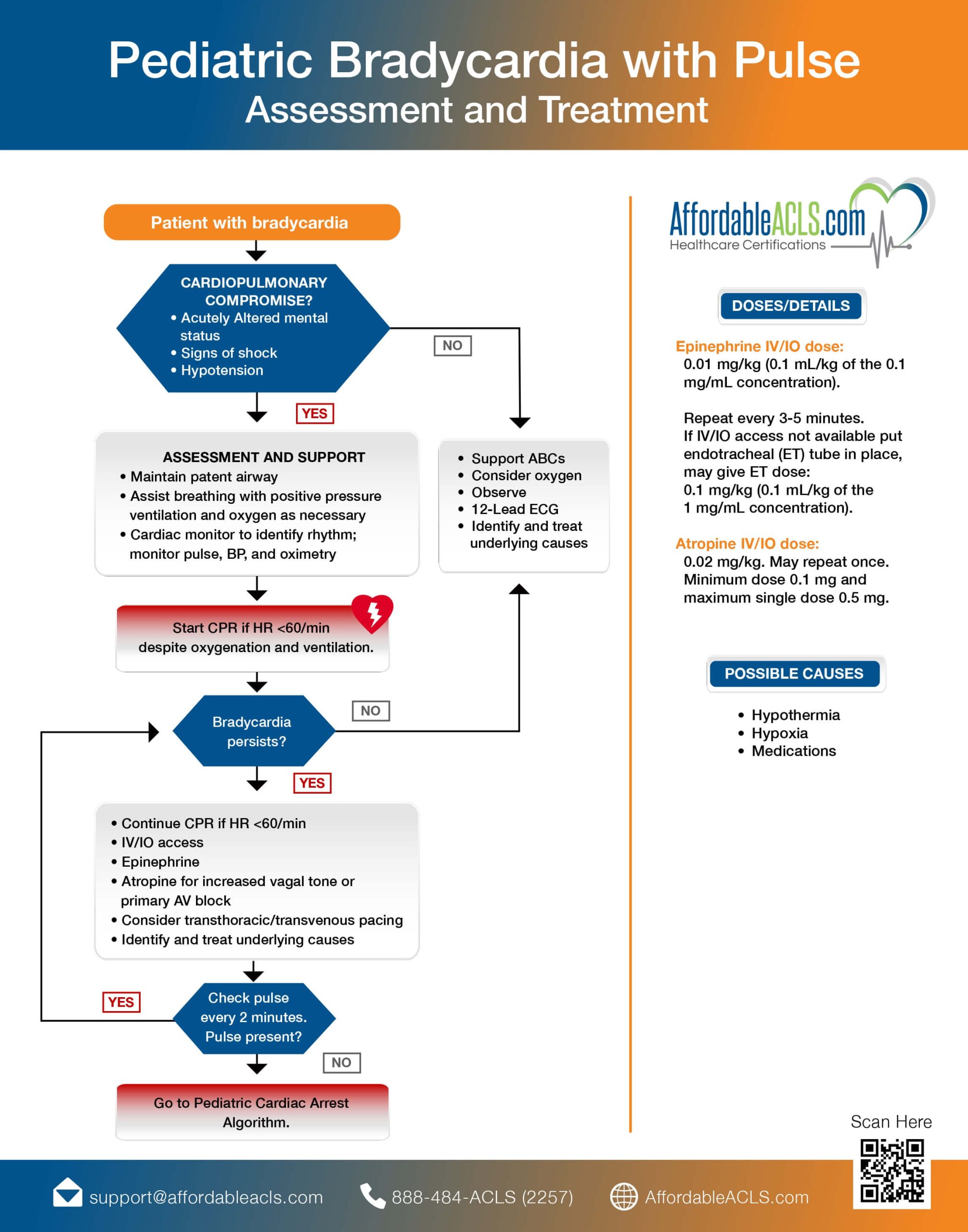Systematic approach algorithm addressing decreased heart rate and secondary hypoperfusion / shock in the pediatric patient. Includes drug dosages. REMEMBER – a heart rate less than 60 in a pediatric patient is treated with CPR. The PALS Bradycardia Algorithm is indicated for both infants and children with bradycardia, poor perfusion, and a palpable pulse. It focuses on reversing bradycardia.
Step 1. Establish that the patient is having bradycardia (heart rate less than 60).
Step 2. Is cardiopulmonary compromise present?
- Altered mental status
- Signs of shock (cyanosis, pallor)
- Hypotension
Step 3. If yes, move on to assessment and support.
- Maintain patent airway
- Assist breathing with positive pressure ventilation and oxygen as necessary
- Cardiac monitor to identify rhythm; monitor pulse, BP, and oximetry
Step 4. Start CPR if the heart rate is less than 60 despite oxygenation and ventilation.
Step 5. Bradycardia persists. If yes, go to step 6.
Step 6. Continue CPR if heart rate <60.
- IV/IO access.
- Epinephrine .01 mg / kg. Repeat every 3-5 minutes.
- Atropine for increased vagal tone or primary AV block (0.02 mg/kg. May repeat once. minimum dose 0.1 mg and maximum single dose 0.5 mg.
- Consider transthoracic / transvenous pacing.
- Identify and treat underlying causes (hypothermia, hypoxia, medications)
Step 7. Check pulse every 2 minutes. If present, return to step 5. If not present, return to the pediatric cardiac arrest algorithm.

